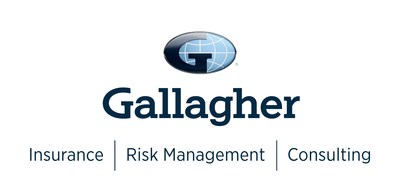GLP-1s, Surging Medical Costs Have Employers Taking a Hard Look at the Return on Investment
Gallagher's 2024 US Physical & Emotional Wellbeing Report reveals that only 52% of US employers effectively manage healthcare costs. Key findings include:
- 92% of organizations faced health plan premium increases, with 24% experiencing double-digit hikes
- Top cost management challenges: high medical services (68%) and specialty drugs (44%)
- 52% of employers tie GLP-1 coverage to weight management program participation
- 80% offer multiple medical plans, with CDHPs and HSAs growing in popularity
- 70% are concerned about employee stress and burnout
- Only 42% believe managers are well-equipped to refer employees to mental health support
Employers are adopting various strategies, including value-based tactics, manager training, and workplace collaboration software to address these challenges and improve employee wellbeing.
Il Rapporto sulla Salute Fisica e Emotiva 2024 di Gallagher negli Stati Uniti rivela che solo il 52% dei datori di lavoro americani gestisce efficacemente i costi sanitari. I risultati chiave includono:
- Il 92% delle organizzazioni ha affrontato aumenti dei premi dei piani sanitari, con il 24% che ha registrato incrementi a due cifre
- Le principali sfide nella gestione dei costi: elevati servizi medici (68%) e farmaci specialistici (44%)
- Il 52% dei datori di lavoro collega la copertura GLP-1 alla partecipazione ai programmi di gestione del peso
- Il 80% offre più piani medici, con una crescente popolarità dei CDHP e delle HSA
- Il 70% è preoccupato per lo stress e il burnout dei dipendenti
- Solo il 42% ritiene che i manager siano ben preparati a indirizzare i dipendenti verso il supporto sanitario mentale
I datori di lavoro stanno adottando varie strategie, tra cui tattiche basate sul valore, formazione dei manager e software di collaborazione sul posto di lavoro per affrontare queste sfide e migliorare il benessere dei dipendenti.
El Informe sobre el Bienestar Físico y Emocional 2024 de Gallagher en EE. UU. revela que solo el 52% de los empleadores estadounidenses gestionan efectivamente los costos de atención médica. Los hallazgos clave incluyen:
- El 92% de las organizaciones enfrentó aumentos en las primas de los planes de salud, siendo el 24% quienes experimentaron incrementos de dos dígitos
- Los principales desafíos en la gestión de costos: altos servicios médicos (68%) y medicamentos especializados (44%)
- El 52% de los empleadores vincula la cobertura de GLP-1 a la participación en programas de manejo de peso
- El 80% ofrece múltiples planes médicos, con un aumento en la popularidad de los CDHP y las HSA
- El 70% está preocupado por el estrés y el agotamiento de los empleados
- Solo el 42% cree que los gerentes están bien preparados para referir a los empleados al apoyo de salud mental
Los empleadores están adoptando diversas estrategias, incluyendo tácticas basadas en el valor, capacitación para gerentes y software de colaboración en el lugar de trabajo para abordar estos desafíos y mejorar el bienestar de los empleados.
2024년 갤러허의 미국 신체 및 정서적 웰빙 보고서에 따르면, 미국 고용주 중 52%만이 의료 비용을 효과적으로 관리하고 있습니다. 주요 발견은 다음과 같습니다:
- 92%의 조직이 건강 보험료 인상을 겪었으며, 24%는 두 자릿수 인상 경험
- 주요 비용 관리 문제: 높은 의료 서비스 비용(68%) 및 전문 약품(44%)
- 52%의 고용주가 GLP-1 보장을 체중 관리 프로그램 참여에 연계
- 80%의 고용주가 여러 의료 계획을 제공하며, CDHP와 HSA의 인기가 증가하고 있음
- 70%가 직원의 스트레스와 탈진에 대해 우려하고 있음
- 단 42%만이 관리자가 직원에게 정신 건강 지원을 안내할 수 있다고 믿음
고용주들은 이러한 문제를 해결하고 직원의 웰빙을 개선하기 위해 가치 기반 전술, 관리자 교육 및 직장 협업 소프트웨어와 같은 다양한 전략을 채택하고 있습니다.
Le Rapport 2024 de Gallagher sur le Bien-Être Physique et Émotionnel aux États-Unis révèle que seulement 52% des employeurs américains gèrent efficacement les coûts des soins de santé. Les résultats clés incluent :
- 92% des organisations ont été confrontées à des augmentations des primes de plan de santé, dont 24% ont connu des hausses à deux chiffres
- Principaux défis de gestion des coûts : services médicaux élevés (68%) et médicaments spécialisés (44%)
- 52% des employeurs associent la couverture GLP-1 à la participation à un programme de gestion du poids
- 80% proposent plusieurs plans médicaux, avec une popularité croissante des CDHP et des HSA
- 70% s'inquiètent du stress et de l'épuisement des employés
- Seuls 42% estiment que les managers sont bien préparés pour orienter les employés vers un soutien en santé mentale
Les employeurs adoptent diverses stratégies, y compris des tactiques basées sur la valeur, la formation des managers et des logiciels de collaboration en milieu de travail pour répondre à ces défis et améliorer le bien-être des employés.
Gallaghers Bericht über das körperliche und emotionale Wohlbefinden in den USA 2024 zeigt, dass nur 52% der amerikanischen Arbeitgeber die Gesundheitskosten effektiv verwalten. Wichtige Erkenntnisse sind:
- 92% der Organisationen sahen sich mit Erhöhungen der Gesundheitsplanprämien konfrontiert, 24% erlebten zweistellige Anstiege
- Die größten Herausforderungen bei der Kostenverwaltung: hohe medizinische Dienstleistungen (68%) und Spezialmedikamente (44%)
- 52% der Arbeitgeber verknüpfen die GLP-1-Abdeckung mit der Teilnahme an Programmen zur Gewichtsreduktion
- 80% bieten mehrere Gesundheitspläne an, wobei CDHPs und HSAs an Popularität gewinnen
- 70% sind besorgt über Stress und Burnout der Mitarbeiter
- Nur 42% glauben, dass Manager gut gerüstet sind, um Mitarbeiter an psychische Unterstützungsangebote zu verweisen
Arbeitgeber setzen verschiedene Strategien um, einschließlich wertbasierter Taktiken, Schulung von Managern und Arbeitsplatz-Kollaborationssoftware, um diesen Herausforderungen zu begegnen und das Wohlbefinden der Mitarbeiter zu verbessern.
- None.
- None.
Employers ranked the high costs of medical services (
"The advantages of new treatments for obesity and excess weight are evident, but the significant cost associated with these medications cannot be ignored," said William F. Ziebell, CEO of Gallagher's Benefits & HR Consulting Division. "Employers that successfully navigate this challenge tend to take a mindful approach to their benefits design. For example, they may require an employee clear a body mass index threshold and actively participate in an employer-sponsored wellbeing program before they cover GLP-1 prescription costs. A holistic strategy, such as this, will likely result in better outcomes, as well as improved employee engagement."
Leveraging different tactics to share costs and improve benefits utilization.
While a silver bullet to reverse the trend of rising healthcare costs doesn't exist, many employers are making progress with different tactics to help employees better utilize and appreciate their benefit offerings.
Choice is one example. The majority of employers (
While not as prevalent as CDHPs, some employers are trialing value-based tactics as a way to offer the highest-quality care at the lowest possible cost. Nearly 1 in 5 (
Stress, burnout, and mental health are areas of concern, but questions remain about whether leaders are equipped help their employees.
Most employers (
In addition to training, technology is also playing a role in mental health support. Many employers are adopting workplace collaboration software to increase social connection. The objective of these digital tools is to promote a positive culture by recognizing employees, addressing health challenges, and providing virtual access to peer support groups.
"It's important for decision-makers to understand the diverse needs of their workforce and use this as a guide to create a benefits offering that will appeal to them," said Ziebell. "Where many employers fall short is by failing to communicate when and how to use specific benefits, and their value. By ensuring that employees are well-informed and equipped with the necessary information to utilize their available benefits, employers can improve employee engagement and bolster retention."
ABOUT THE US PHYSICAL & EMOTIONAL WELLBEING REPORT
Gallagher's 2024 US Physical & Emotional Wellbeing Report is part of the Workforce Trends Report Series, covering medical benefits, pharmacy benefit management, wellbeing initiatives, and absence management. It presents recent findings on current and emerging trends to help employers optimize their investments in physical and emotional wellbeing. Upcoming reports in the series will each center on a different aspect of wellbeing. Data and insights are compiled from a variety of Gallagher benchmarking surveys conducted each year. In this report, they're based on the results of the US Benefits Strategy & Benchmarking Survey, gathered from January to March 2024. A total of 3,552 organizations across the US participated. Findings are broken out by region, organization size, and ownership structure for peer comparison.
ABOUT GALLAGHER
Arthur J. Gallagher & Co. (NYSE:AJG), a global insurance brokerage, risk management and consulting services firm, is headquartered in
Contact:
Mary Schwartz, Gallagher
847.378.5893
mary_schwartz@ajg.com
![]() View original content to download multimedia:https://www.prnewswire.com/news-releases/glp-1s-surging-medical-costs-have-employers-taking-a-hard-look-at-the-return-on-investment-302209513.html
View original content to download multimedia:https://www.prnewswire.com/news-releases/glp-1s-surging-medical-costs-have-employers-taking-a-hard-look-at-the-return-on-investment-302209513.html
SOURCE Gallagher








